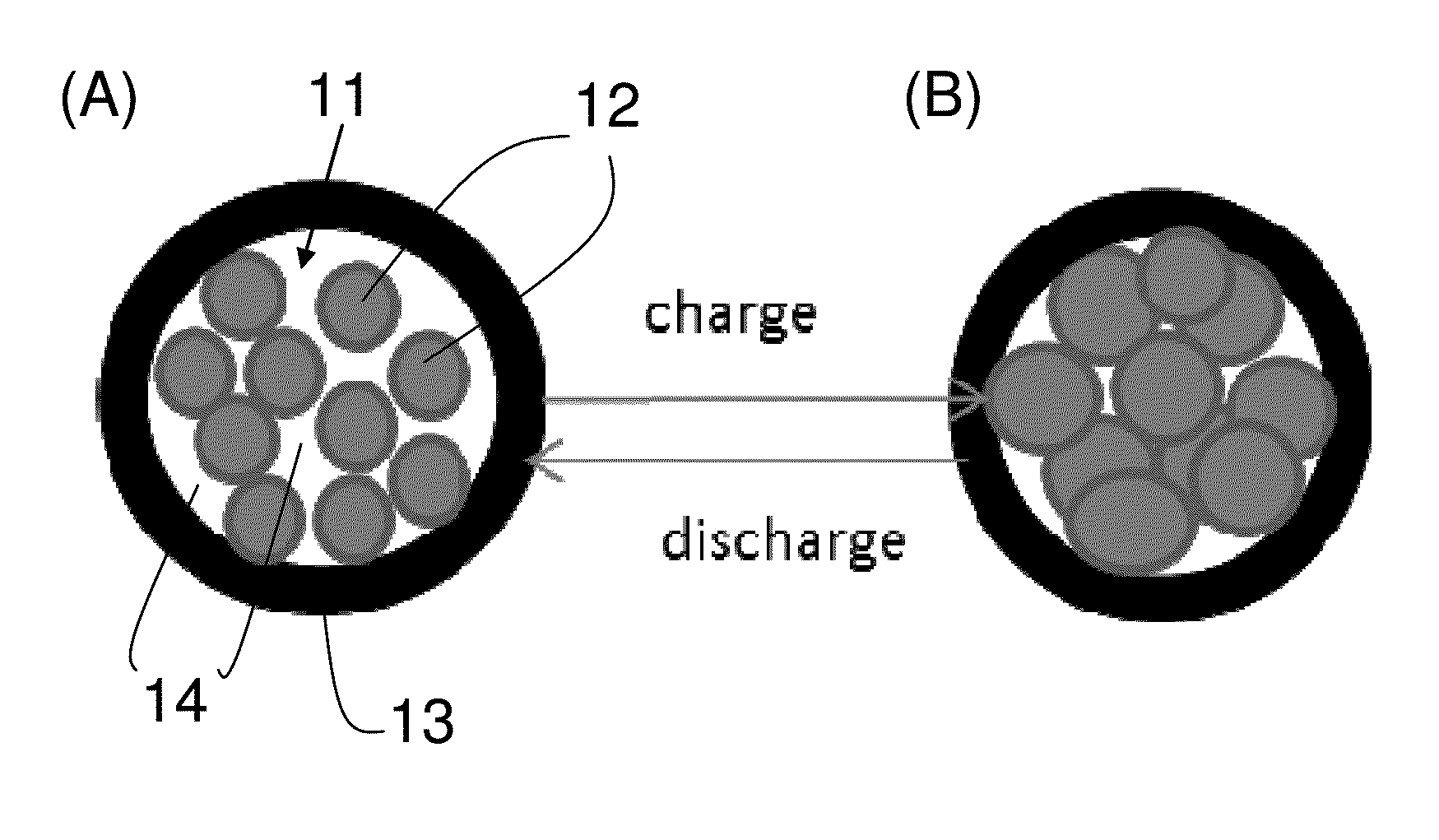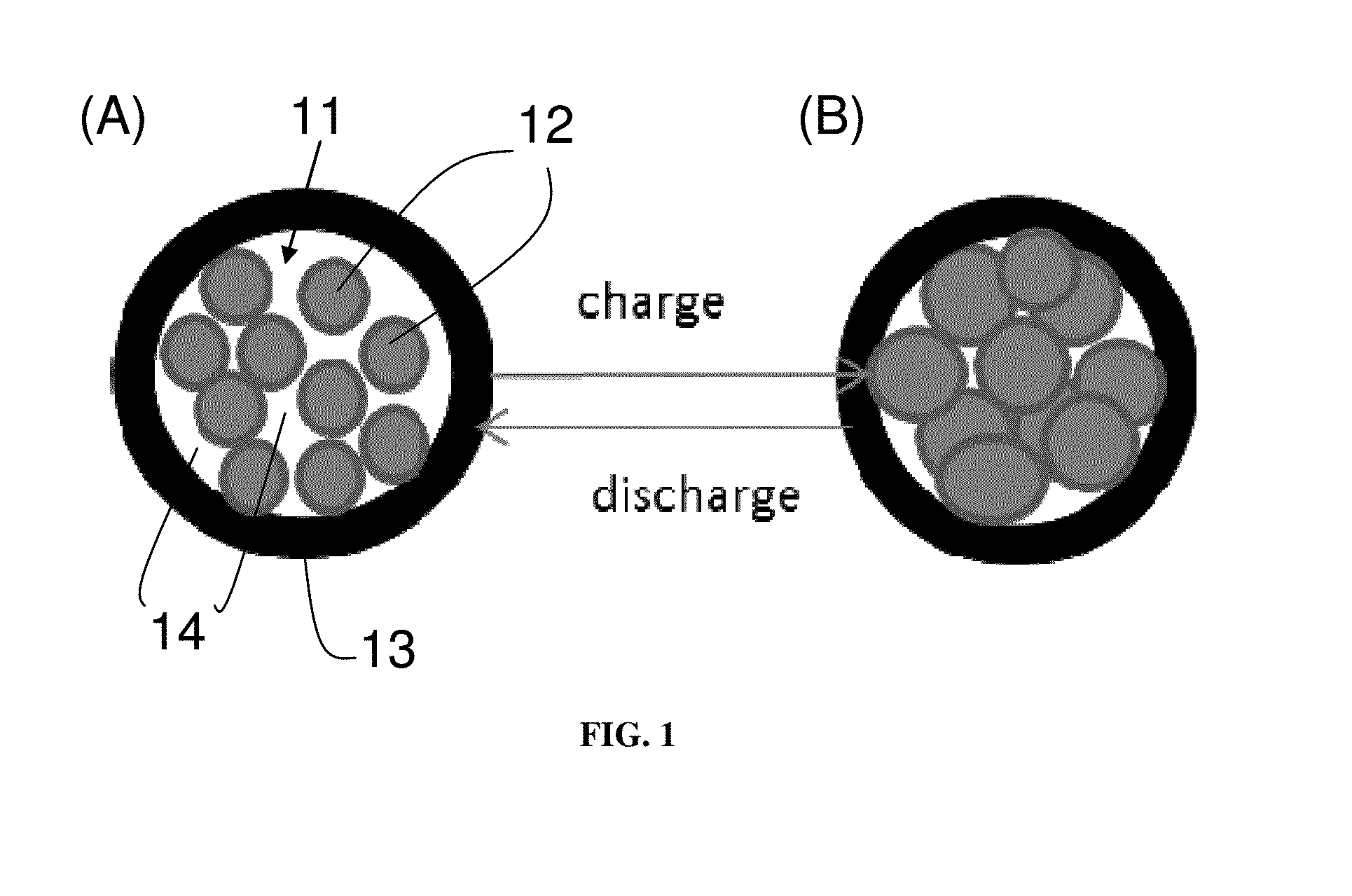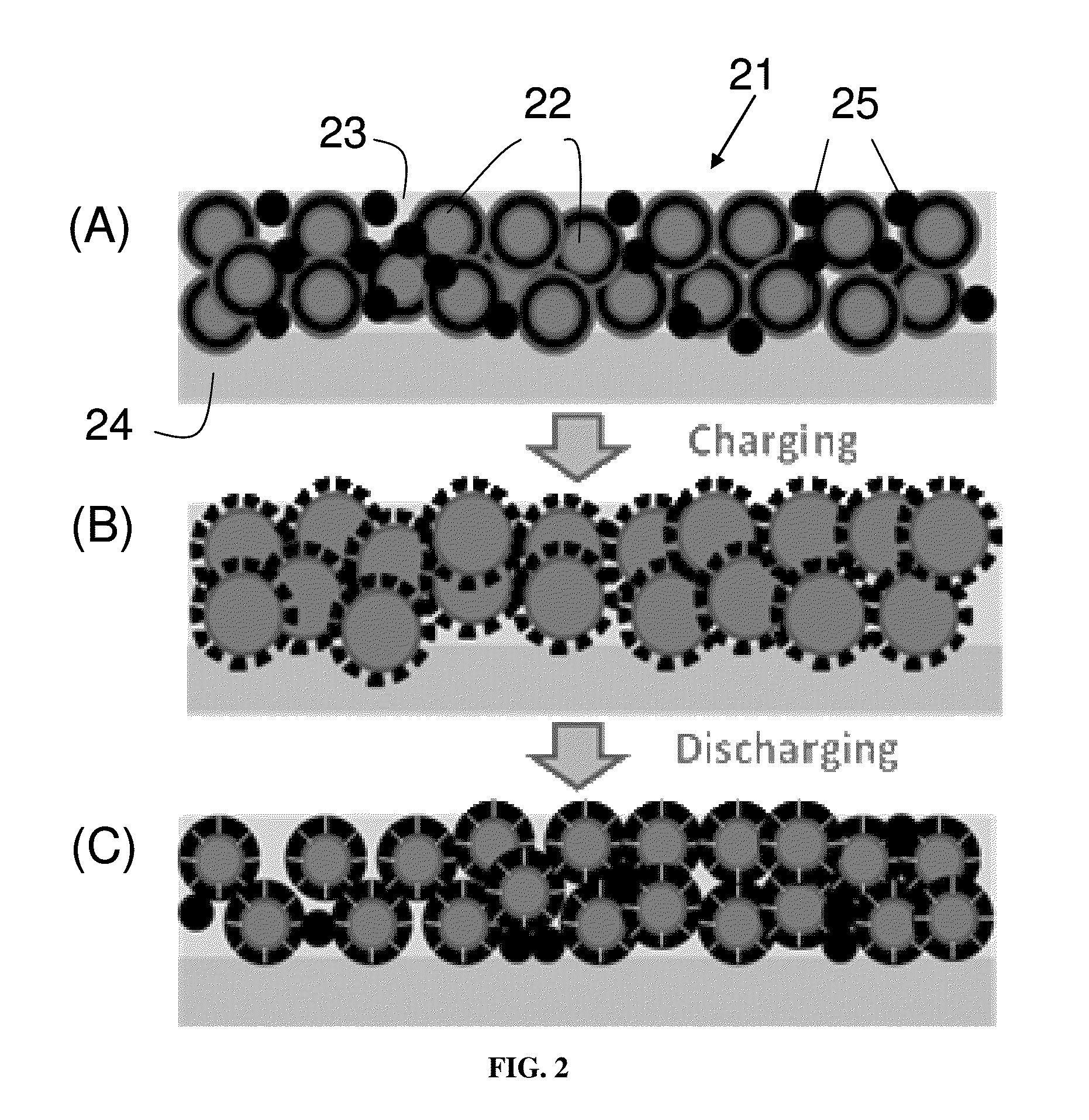Si@C core/shell Nanomaterials for High Performance Anode of Lithium Ion Batteries
a lithium ion battery, high-performance technology, applied in the manufacture of electrodes, cell components, electrochemical generators, etc., can solve the problems of insufficient long driving distance, heavy and bulky, and current battery technology cannot keep up with the increasing, so as to achieve good battery performance, stable cycle ability, and good capacity
- Summary
- Abstract
- Description
- Claims
- Application Information
AI Technical Summary
Benefits of technology
Problems solved by technology
Method used
Image
Examples
example 1
[0055]Example 1: Si nanoclusters@carbon core / shell anode materials with good stability and battery cycle performance.
[0056]12 g Si was mixed with 120 ml water under stirring, then 120 g glucose and 4 ml ethanol were added to form a mixture suspension. The mixture was hydrothermally heated at 200° C. for 12 hr. The resulting material was isolated by filtration. The precipitate is dried in a vacuum oven and then carbonized.
[0057]The charge and discharge capacities were measured with coin cells in which a lithium metal foil was used as the counter electrode. The electrolyte employed was 1M solution of LiPF6 in ethylene carbonate, ethylmethyl carbonate and dimethyl carbonate (EC+EMC+DMC) (1:1:1 in volume). The active materials powder (52.5%), Super P (17.5%) and sodium alginate binder (30%) were homogenously mixed in water (alginate:NMP=1:15) in the condition mixer (AR-100, Thinky). The slurry was coated uniformly on copper and aluminum foil. Finally, the electrode was dried in air at 6...
example 2
[0060]Example 2: Si nanoclusters@carbon core / shell anode materials with thinner carbon shell and less space by tuning the synthesis parameters (lower ethanol content and lower glucose content).
[0061]12 g Si was mixed with 120 ml water under stirring, then 40 g glucose and 3 ml ethanol were added to form a mixture suspension. The mixture was hydrothermally heated at 200° C. for 12 hr. The resulting material was isolated by filtration. The precipitate is dried in a vacuum oven and then carbonized.
[0062]The charge and discharge capacities were measured with coin cells in which a lithium metal foil was used as the counter electrode. The electrolyte employed was 1M solution of LiPF6 in ethylene carbonate, ethylmethyl carbonate and dimethyl carbonate (EC+EMC+DMC) (1:1:1 in volume). The active materials powder (52.5%), Super P (17.5%) and sodium alginate binder (30%) were homogenously mixed in water (alginate:NMP=1:15) in the condition mixer (AR-100, Thinky). The slurry was coated uniforml...
PUM
| Property | Measurement | Unit |
|---|---|---|
| size | aaaaa | aaaaa |
| temperature | aaaaa | aaaaa |
| temperature | aaaaa | aaaaa |
Abstract
Description
Claims
Application Information
 Login to View More
Login to View More - R&D
- Intellectual Property
- Life Sciences
- Materials
- Tech Scout
- Unparalleled Data Quality
- Higher Quality Content
- 60% Fewer Hallucinations
Browse by: Latest US Patents, China's latest patents, Technical Efficacy Thesaurus, Application Domain, Technology Topic, Popular Technical Reports.
© 2025 PatSnap. All rights reserved.Legal|Privacy policy|Modern Slavery Act Transparency Statement|Sitemap|About US| Contact US: help@patsnap.com



